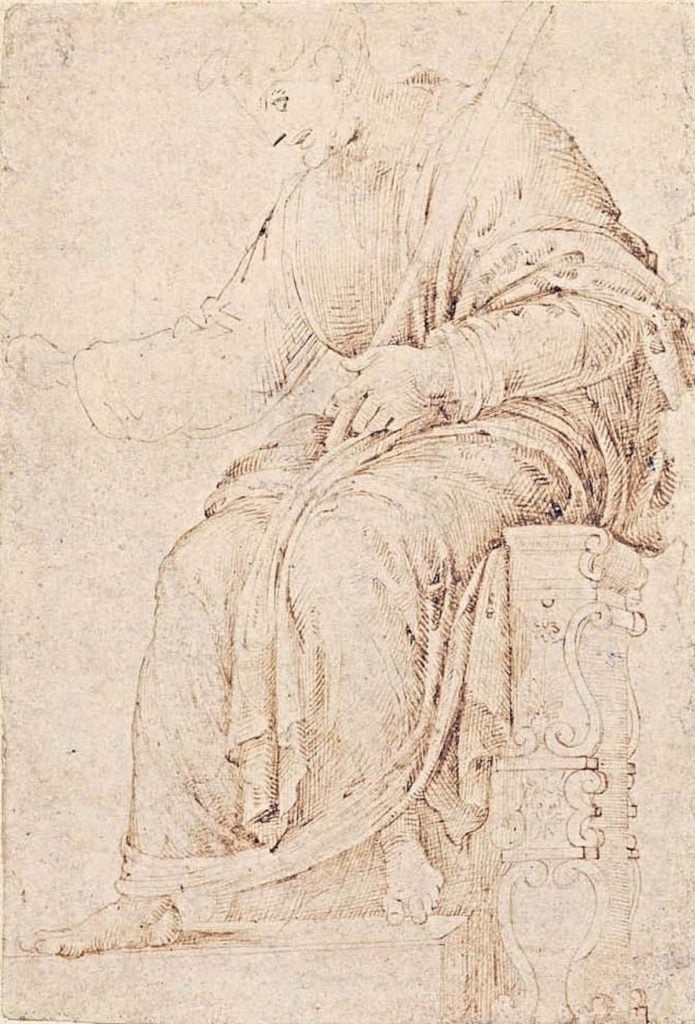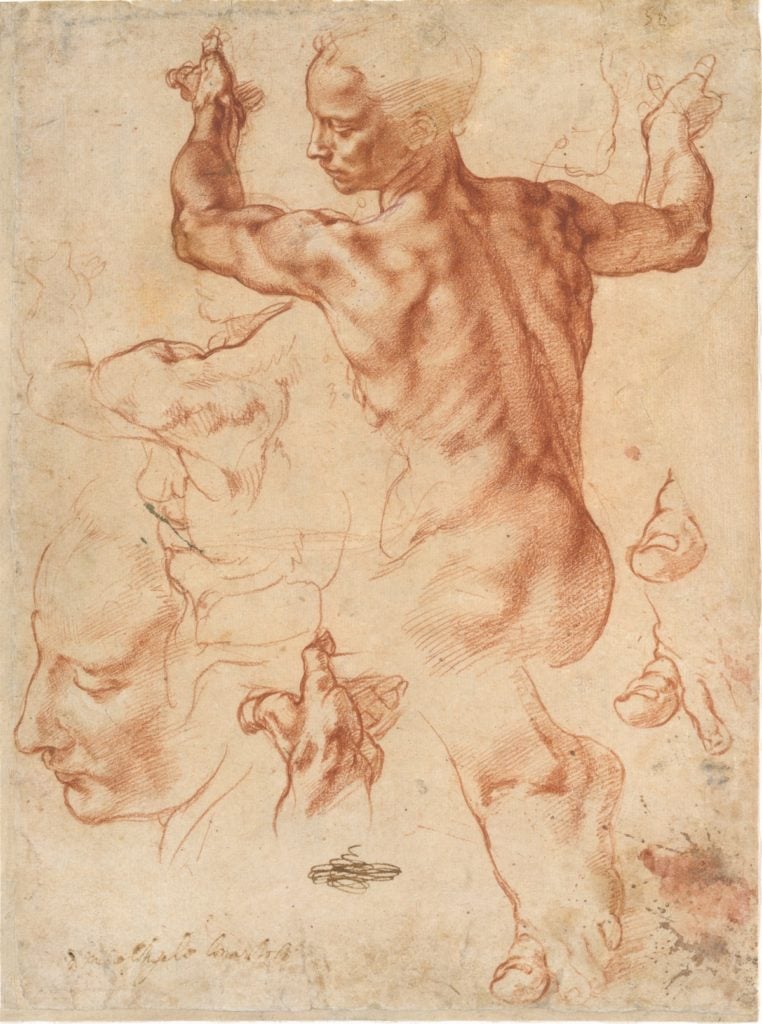Art World
This Drawing Has Just Been Identified as the Earliest Known Michelangelo Work to Date—and He Did It When He Was Just 12
A private British collector bought the work at a French auction house in 1989.

A private British collector bought the work at a French auction house in 1989.

Caroline Goldstein

A leading Italian art scholar has attributed a drawing from ca. 1487 to Michelangelo—and says it’s the earliest known work by the artist to date, done when the Renaissance master was just 12 years old.
The pen and brown ink drawing, which measures just over four by eight inches, depicts a robed man sitting on a throne with a scepter in one hand. Although the Seated Man is “a piece of juvenilia,” the scholar, Sir Timothy Clifford, told the Daily Mail that its particularities point to Michelangelo’s style: “with rounded chins and a very hard line under the nose … No other Ghirlandaio pupil draws like that,” Clifford said of the artist’s teacher, Domenico Ghirlandaio.
In 1989, an unnamed British collector purchased the then-unidentified work from a French auction house. When the art historian Miles Chappell told him it looked like a Michelangelo, the collector contacted Clifford, who was formerly director of the National Galleries of Scotland.
Clifford examined the drawing and although it bears resemblance to the work of other Florentine draughtsmen of the era, “there’s something about it that just gives the game away,” Clifford told the Daily Mail. “It’s a fascinating object.”

Michelangelo Buonarroti, Studies for the Libyan Sibyl (recto); Studies for the Libyan Sibyl and a small Sketch for a Seated Figure (verso), (c. 1510-11). Courtesy of the Metropolitan Museum of Art.
The fact that the drawing survived Michelangelo’s lifetime is remarkable in itself. In the 16th century, Giorgio Vasari wrote that the artist was prone to burning works that he deemed imperfect and didn’t want to display the obstacles he faced when he “tested his genius” over the years.
The drawing is currently on loan to the Museum of Fine Arts, Budapest, as part of the show “Triumph of the Body,” through June 30.
The curator of the show, Zoltán Kárpáti, told the Mail: “Bearing in mind that study drawings by apprentices were only rarely preserved, coupled with Michelangelo’s lifelong obsession with destroying any drawings he no longer had a use for, the sketch deserves a prominent place in the master’s oeuvre.”